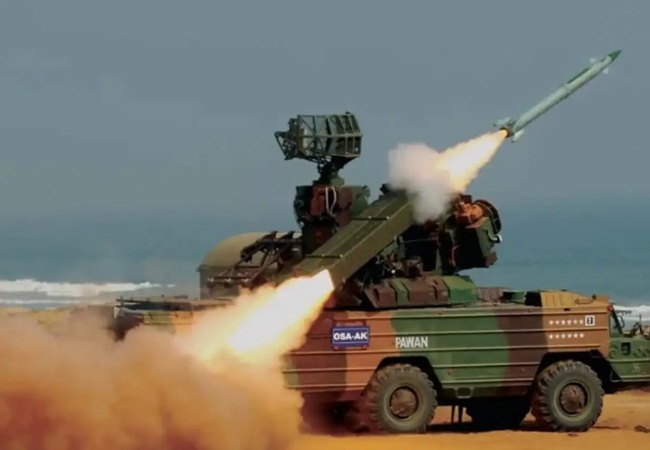Dec 04, 2025
Dec 04, 2025
How ‘Akashteer’ Changed the Rules of Autonomous Warfare
What if India’s next-generation drone system made nation-states rethink their air defence? What happens when military innovation ceases to come from abroad and instead emerges from Bharat’s own knowledge systems? What if the world’s most powerful armies suddenly found themselves racing to play catch-up?

In 2025, India unveiled AkashTeer — an indigenously developed, real‑time targeting and interception system that harnesses ISRO’s satellite grid, NAVIC-guided precision, AI-driven drone swarms, and BEL-DRDO’s battlefield processors. This is not an upgrade. It is a leap that redefines strategic deterrence, surveillance, and autonomous military response.
The Anatomy of Sovereign Shockpower
Satellite-Linked Combat Vision
ISRO’s Cartosat and RISAT (Radar Imaging Satellite) imagery feed live into the AkashTeer command cloud. This delivers true battlefield awareness, entirely independent from foreign surveillance networks.
NAVIC Precision Over GPS
NAVIC (Navigation with Indian Constellation) offers localized guidance accuracy. In deserts, forests, and mountain terrains, it outperforms GPS, allowing drone strikes with near-zero margin of error.
Autonomous Swarm Drones
These aerial units carry 5–10 kg payloads, evade traditional radar with stealth tech, and adjust their flight path mid-mission. They operate like cyber‑sentinels — silent, lethal, and invisible until impact.
Zero-Latency AI Command Center
AI processes battlefield data, weather, threat contours. It reallocates tasks within seconds. Human decision lag has become obsolete in combat decision loops.
AkashTeer is not a collection of tools. It is a combat cloud — a seamlessly integrated network of satellites, drones, sensors, and algorithms. It can be deployed from a jeep‑mounted control node. No foreign chipsets, no imports, no compromise.
Global Military Hierarchies in Shock
America
Pentagon analysts acknowledged that Indian drone swarms bypassed both Chinese and Pakistani radar shields, outclassing stealth capabilities they assumed were exclusive to the US. Defence think tanks are scrambling to re-evaluate assumptions on indigenous innovation.
China
Beijing’s military watchers have gone silent. Their BeiDou and CASC (China Aerospace Science and Technology Corporation) systems are being recalibrated to counter the sudden reality of India’s AI‑satellite fusion.
Turkey
Even Turkey’s pride, the Bayraktar TB2 drones, now look sluggish. India’s drones are lighter, faster, stealthier. Ankara is next in line for software upgrades.
Pakistan
Their radar grid was blind. Anti-drone systems froze. Command centres paused. AkashTeer’s launch dismantled confidence. The result: tactical paralysis.
Strategic Disruption at Home & Abroad
AkashTeer signals India’s arrival as a sovereign defence innovator. No longer a consumer of global weaponry, India is now its own armory.
This is not procurement. It is paradigm shift.
Why This Matters
The Longer Arc of Sovereign Innovation
With 600 million under 25 and a booming tech ecosystem, India is moving beyond manufacturing to mastery. AkashTeer is not the end — it is the beginning of an era where Bharat writes the rules of autonomous defence.
Final Questions for the Global Stage
AkashTeer is not just a system. It is India’s sky-sent arrow. It never misses.
It demands respect. It changes the narrative. It makes India a superpower in its own right.
Har Har Mahadev. Jai Bharat.
09-Aug-2025
More by : P. Mohan Chandran